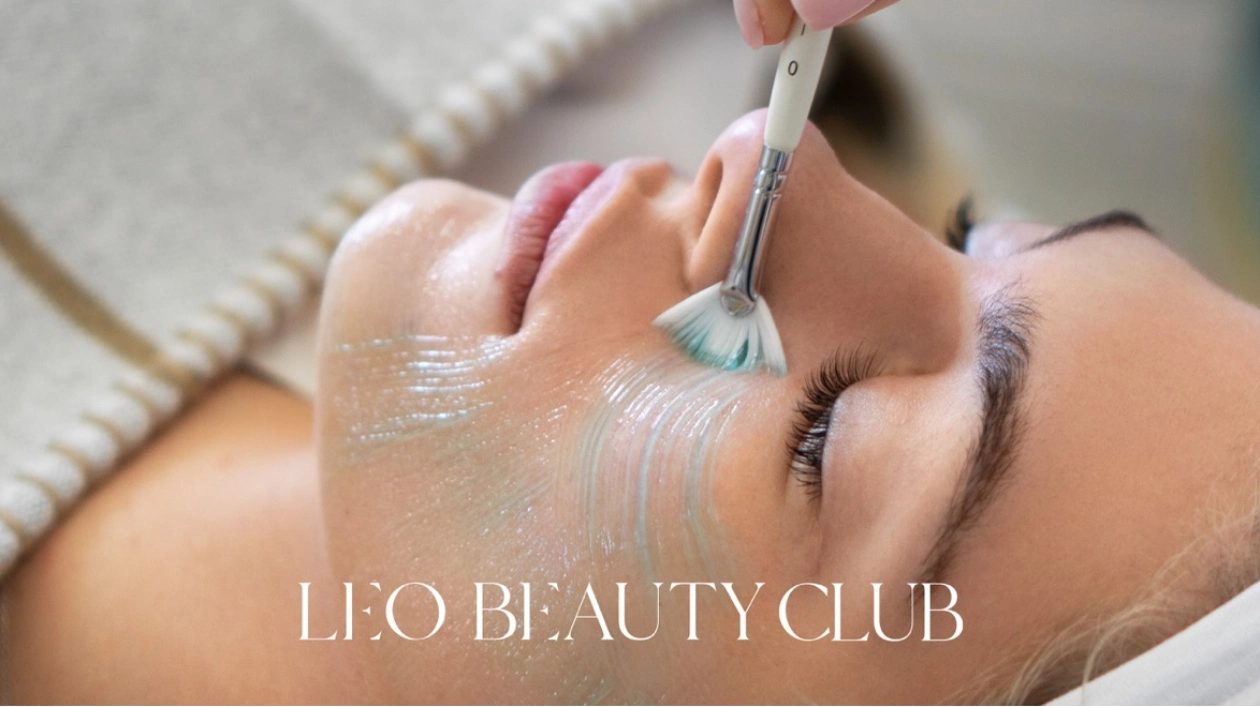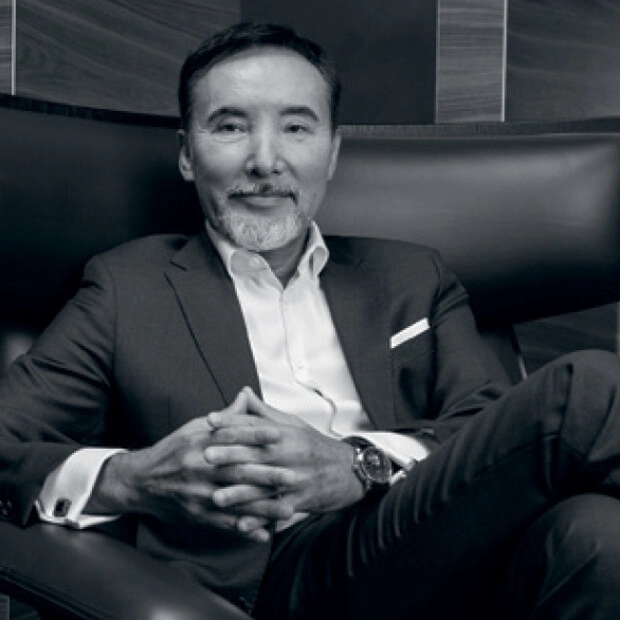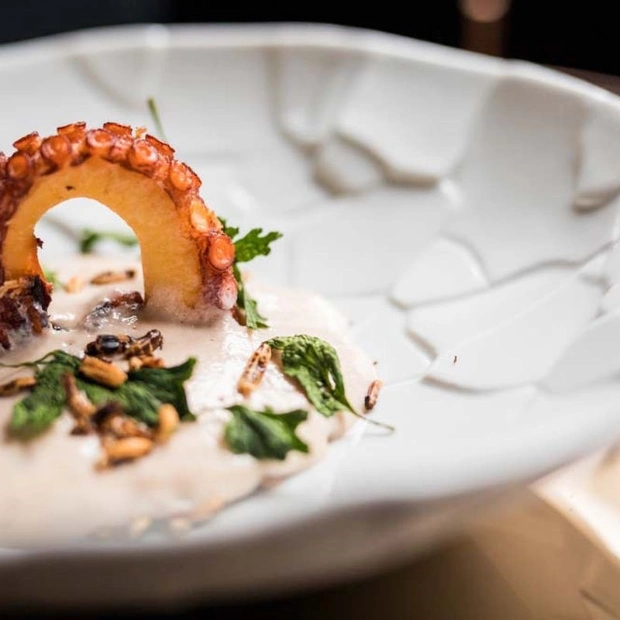Effective acne remedies: What Leo Beauty Club cosmetologists recommend
Acne is a common problem that most often affects young people. However, an unwanted rash of pimples can occur at any age. It affects not only women but also men.
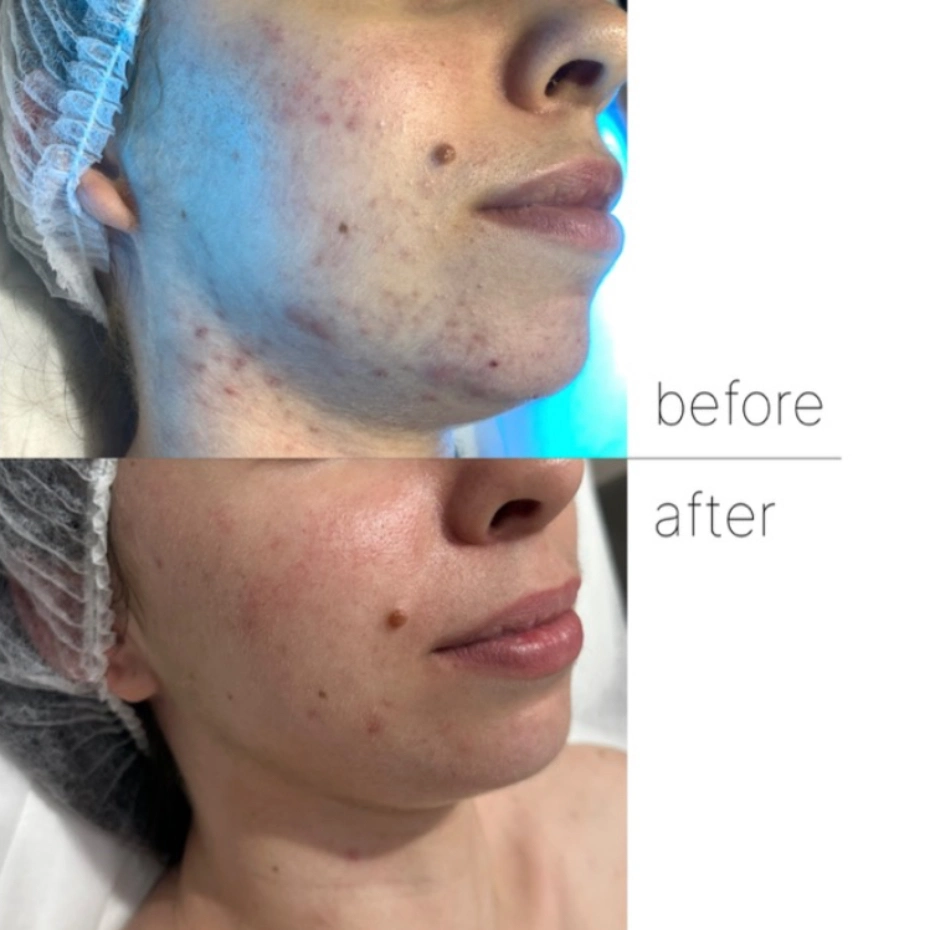
Acne is a chronic inflammatory skin disease caused by the dysfunction of the sebaceous glands. It leads to the appearance of pimples, acne, and, less commonly, cystic formations on the skin. Fighting acne requires a comprehensive approach. It’s essential not only to treat visible skin rashes but also to fight them from within. That’s why acne treatment should include a balanced diet and lifestyle adjustments. We discussed the acne treatment process with Anna Semeniako, a cosmetologist at Leo Beauty Club in Dubai.
What To Do Before Starting Acne Treatment
Before prescribing any procedures, it is essential to identify the cause of acne, which may be triggered by:
● Bacterial infections
● Hormonal changes
● Antibiotics, steroids, and medications containing high levels of iodine or bromine
● Digestive system diseases
● Pregnancy or its termination
● Stress
External factors, such as environmental pollution, UV radiation, high humidity, and aggressive procedures like mechanical peeling and at-home facial cleansing, can also contribute to the development of acne. Additionally, rashes can occur due to skincare and makeup products.
What Procedures Are Effective In Treating Acne
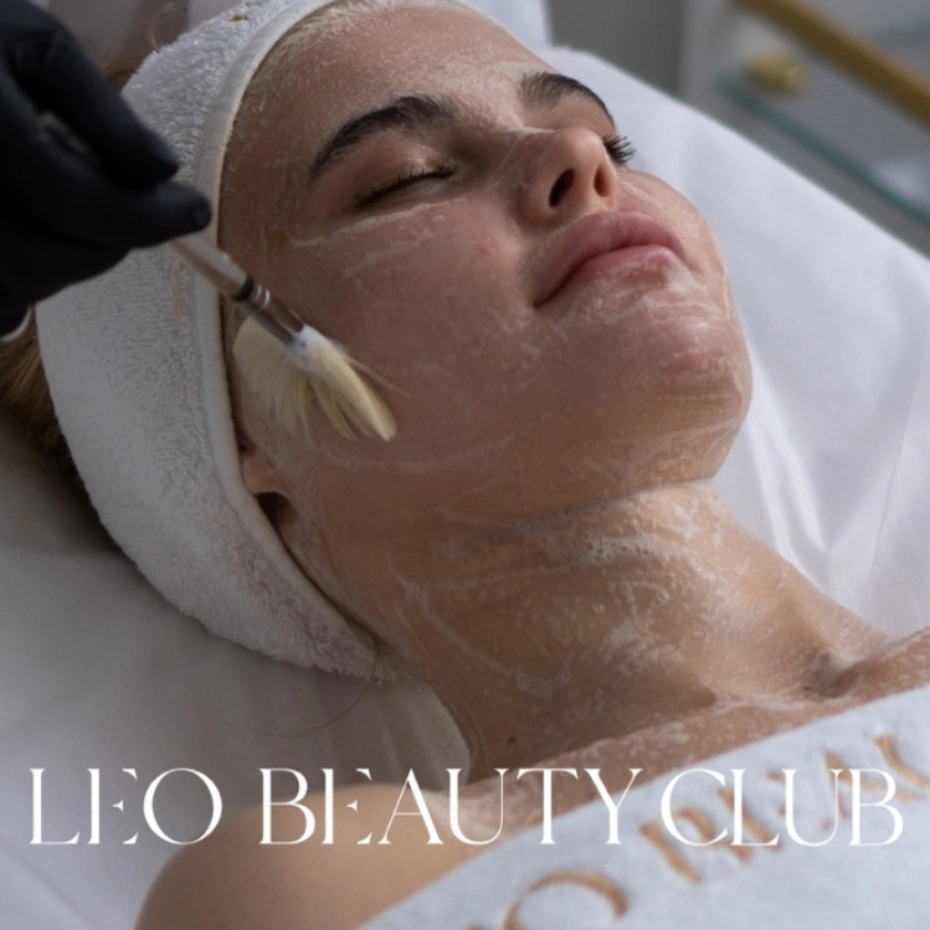
When selecting an acne treatment, it is essential to consider the skin type, the type of acne, and its severity. For this reason, I do not recommend performing procedures on your own.
It’s also essential to be aware of treatments that may worsen the condition. The following procedures are not recommended:
● Mechanical peelings and scrubs
● Thermal procedures
● Facial massage
● Filler injections
Exfoliating Procedures – Chemical and Acid Peelings
These procedures yield good results in treating acne and improving skin texture. Such peelings typically contain salicylic, glycolic, and azelaic acids. They exfoliate keratinized skin cells, cleanse pores, and reduce sebum production. Additionally, peelings have an anti-inflammatory effect, which helps pimples and acne heal faster. The procedure also reduces oily shine and the appearance of post-acne marks. Peelings are highly effective when inflammation subsides and are recommended for acne prevention.
There are two types of peelings:
● Light – helps maintain skin tone
● Deep – targets active acne and post-acne effects
Peelings are prescribed as a course of treatment to ensure a stable and long-lasting result.
Light Therapy (LED, IPL)
This method, also known as phototherapy, involves targeted exposure to light radiation. It destroys the bacteria that cause acne. The treatment not only helps reduce skin breakouts but also decreases sebum production and stimulates blood flow to the sebaceous glands. Phototherapy has been proven highly effective in treating mild to moderate acne.
Manual and Mechanical Facial Cleansing
You should avoid performing at-home facial cleansing on yourself, as this can lead to infection and scarring. At-home facial cleansing can often worsen acne, so it is best to have it performed by a professional. This procedure removes impurities and excess sebum, and can be performed mechanically or using ultrasound. It is effective in the early stages of acne. However, facial cleansing is not recommended for the 3rd and 4th stages of acne, as the skin is highly inflamed at these stages. Mechanical treatment may exacerbate inflammation, cause skin injury, and facilitate the spread of the infection. Severe acne is typically treated with medication first, and facial cleansing is only performed after the medication treatment is completed.
Laser Therapy and Fractional Technology
Laser therapy is not only an effective treatment for acne but also an active form of prevention. It involves sterilising the skin and helps eliminate scars and marks.
The laser targets inflamed areas precisely and has an antibacterial effect that prevents the growth of pathogenic bacteria responsible for acne breakouts. This procedure reduces inflammation and swelling. The laser pulses penetrate the epidermis, stimulating the synthesis of collagen fibres from within.
The results of laser treatment are long-lasting if combined with regular acne prevention. It is also necessary to eliminate the internal causes of acne.
Salicylic Acid and Retinoid Therapy
Salicylic acid is a powerful antiseptic that reduces inflammation, deeply cleanses pores, and accelerates healing and tissue regeneration. Additionally, it regulates sebaceous gland activity, helping to prevent acne.
Retinoids are also widely used in acne treatment and provide the following benefits:
● Normalise skin renewal at the cellular level
● Eliminate scars and hyperpigmentation
● Smooth skin texture and even skin tone
Modern Solutions in the Fight Against Acne: What Do Dermatologists Recommend in 2025?

The procedures and treatments mentioned above are not the only methods for fighting acne. The following methods are also practical:
1. Exfoliation. This refers to deep facial cleansing using scrubs, peelings, and masks. Exfoliation requires a comprehensive approach and is performed in several stages, with the number and sequence determined by a doctor.
2. Antibacterial ointments. These target the regulation of propionibacteria growth, which causes new areas of inflammation. Additionally, these ointments help dry out acne.
3. Antibiotics. Essential for treating moderate to severe acne. Like antibacterial ointments, these medications must be prescribed by a professional.
4. Hormonal therapy. Hormonal changes in the body can trigger acne in adults. Doctors often prescribe relevant tests and appropriate treatment after these tests have been completed.
5. Mesotherapy. This involves the injection of special anti-inflammatory medications, which are prescribed individually based on the stage of the acne and the patient’s characteristics. These help reduce inflammation, regulate sebum production, and improve skin condition.
A dermatologist must choose the acne treatment for each patient individually.
How to Prepare Your Skin for Acne Treatment
The main advice is to follow the recommendations of the cosmetologist or dermatologist. There are some general guidelines, though:
● Avoid self-cleansing your face — this rule applies not only when preparing for treatment but also to your overall skincare routine.
● Avoid aggressive procedures — combining peeling and scrubbing with treatment can worsen acne and cause unwanted effects.
● Do not drink alcohol — toxins can lead to complications, swelling, and inflammation.
● Avoid sun exposure and tanning beds — always apply sunscreen before going outside.
● Do not wear makeup — avoid using any cosmetic products for at least 24 hours before treatment.
Why Is It Important To Consult A Dermatologist
Acne is often a symptom of internal disorders. The dermatologist will assess the condition of the skin, the type and depth of the rash, the degree of oiliness, and, if necessary, will prescribe tests for you. It is also essential to consider factors such as the phase of the menstrual cycle, pregnancy, or breastfeeding.
How To Care For Your Skin After Procedures
After acne treatment, follow these recommendations:
● Use moisturisers regularly.
● Avoid aggressive procedures and products to prevent allergic reactions.
● Refrain from cosmetological treatments involving the use of various devices, peelings, and mechanical facial cleansing for 1 to 3 months.
● Cleanse your skin gently and consistently.
● Maintain a healthy diet by avoiding foods that are spicy, fatty, or sugary, as well as harmful additives and preservatives.
● Limit sun exposure.
Acne may recur if no internal problems were identified during the examination. To prevent new breakouts, it’s essential to follow your doctor’s advice regarding skincare and lifestyle.
How To Care For Your Skin After Peeling Or Laser Therapy
After peeling or laser therapy, you should follow these recommendations:
1. Gently cleanse your skin. After the procedure, avoid wetting it for 12–24 hours. Wash your face with warm water. It should not be hot — this is very important! Use mild products with a balanced pH. Avoid products with acids, retinol, or exfoliating particles. After washing, gently dry your face with a soft towel. Do not rub the skin.
2. Use a special restorative cream. Your cosmetologist-dermatologist will prescribe it. The use of regular skincare products during skin recovery can cause irritation and inflammation.
In the first days after peeling and laser therapy, it is essential to maintain a balanced diet. Your diet should include lean proteins, vitamins, and minerals. Add more vegetables and fruits to your menu. This will help your skin recover faster.
What To Avoid In The First Days After Treatment
In the first days after therapy, I recommend avoiding the following:
● Heat — hot showers, saunas, and baths are not allowed.
● Sun exposure — it’s best to stay at home in the first days after the procedure. If you need to go outside, use sunscreen with the highest level of protection.
● Intense physical activity — stop exercising for a while.
● Skin exfoliation — during recovery, dead skin flakes may appear. Do not pick off the flakes, rub your face with a washcloth, or use scrubs.
How Does Diet Affect The Condition Of The Skin With Acne
Diet is of great importance. I recommend avoiding foods that are high in fat, fried, sweet, and fast food, as well as alcohol. It is worth including: vegetables, fruits, lean meat, seafood, grains, and fermented dairy products. Vitamins A, C, and E are especially important for skin healing and restoration.
What Ingredients Should Acne Cosmetics Contain
Post-acne skincare products should include the following active ingredients:
1. AHA Acids. These accelerate the natural exfoliation of dead skin cells and promote renewal of the skin’s surface, making it brighter.
2. Lactic Acid. It stimulates renewal of the stratum corneum and dissolves sebum buildup in the openings of the sebaceous glands. It also helps remove external impurities.
3. Retinoids. Available not only as medications but also in creams and serums, retinoids are effective for all types of post-acne, including atrophic scars.
4. Salicylic Acid. Suitable for treating all types of post-acne. While it may not yield dramatic results for severe cases, it effectively cleanses pores, reduces oiliness, exfoliates dead skin, and helps reduce redness and swelling.
Sample Skin Care Routine
To achieve lasting results, it’s essential to care for your skin correctly. Follow these recommendations:
1. Regular cleansing. Use gentle products without harsh ingredients. Formulas containing salicylic acid are a great choice. For makeup removal, use micellar water; for washing, opt for a soft, gentle gel.
2. Toning. Helps restore pH balance and reduce inflammation. Choose alcohol-free toners.
3. Moisturizing. Contrary to popular belief, oily skin also needs hydration. Use special creams, fluids, or gels designed for this purpose. Avoid products containing oils, as they can worsen acne and cause an unwanted oily shine. Before applying moisturiser, you can use a serum with niacinamide to tighten pores and even out skin tone.
4. Treatment of breakouts. The procedures have been described above. A dermatologist or cosmetologist should supervise the treatment.
5. Sun protection. High temperatures and excessive drying are known enemies that are detrimental to the skin. That’s why, in the summer, it’s essential to use creams with high SPF protection.
Fighting acne only from the outside isn’t enough. It requires a comprehensive approach and addressing the problem from within. Along with proper skincare, it’s crucial to maintain a healthy diet, balance hormone levels, get enough rest, and avoid stressful situations.
Book your cleansing here
